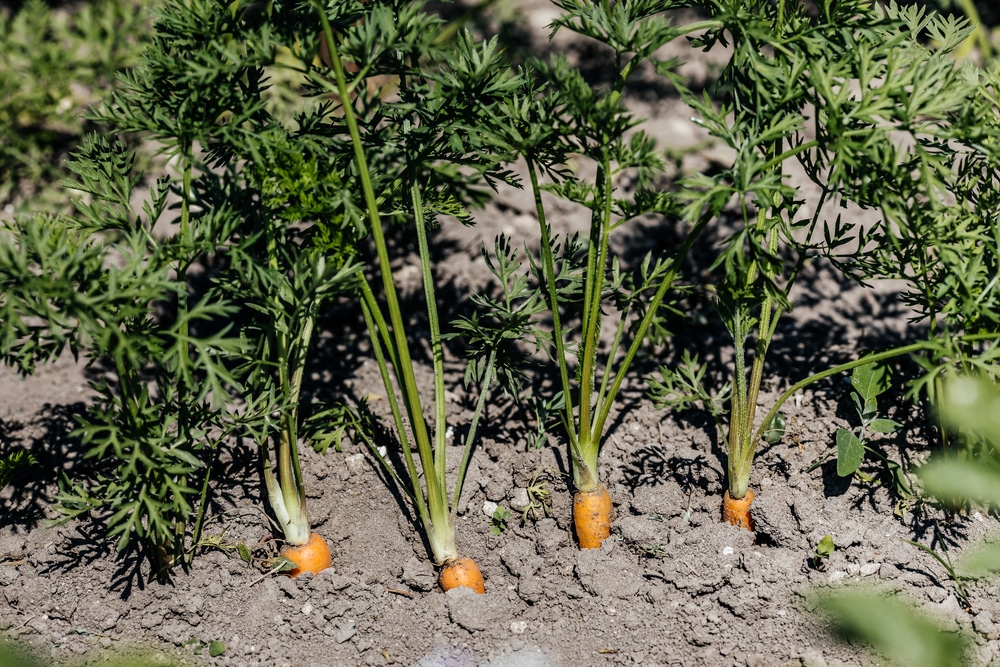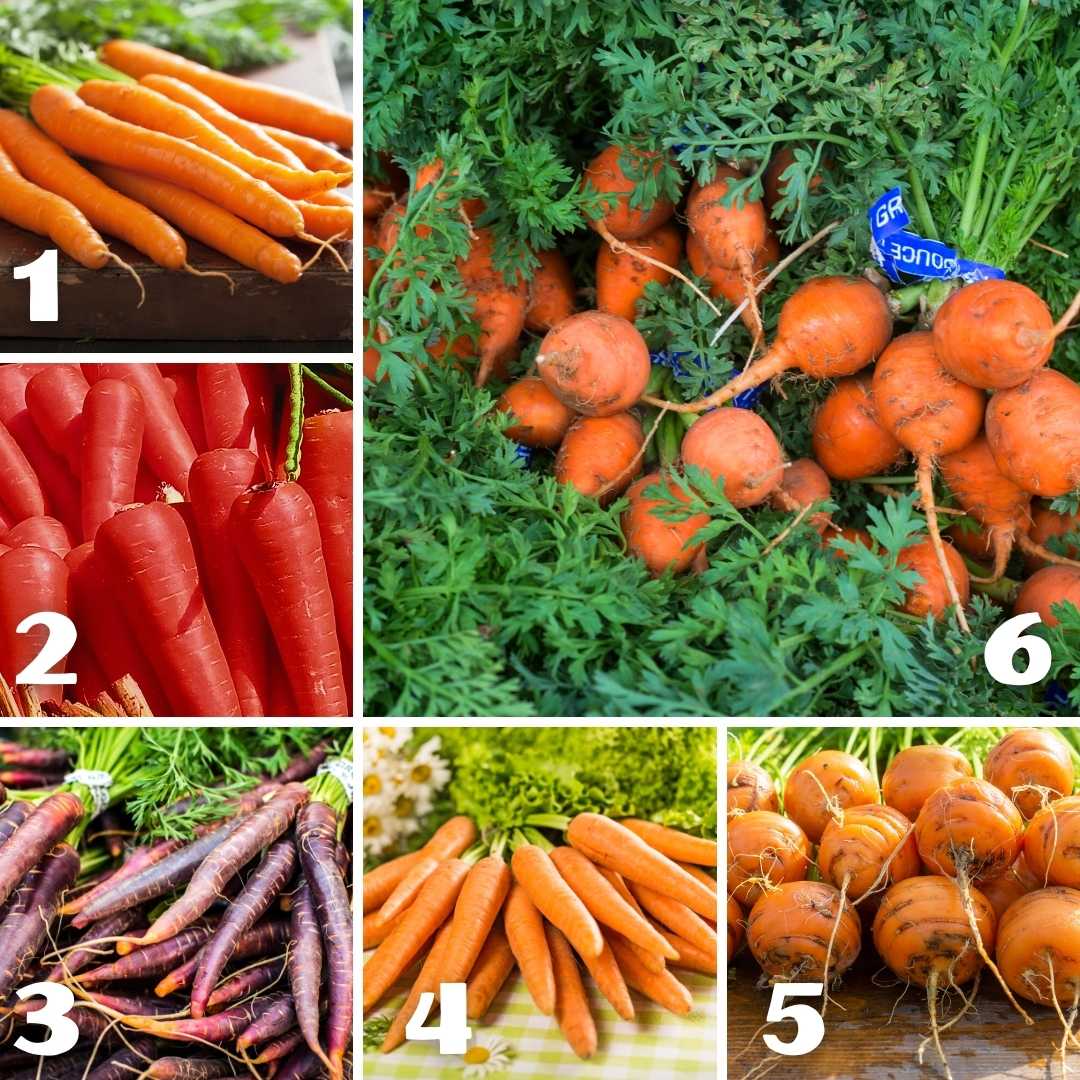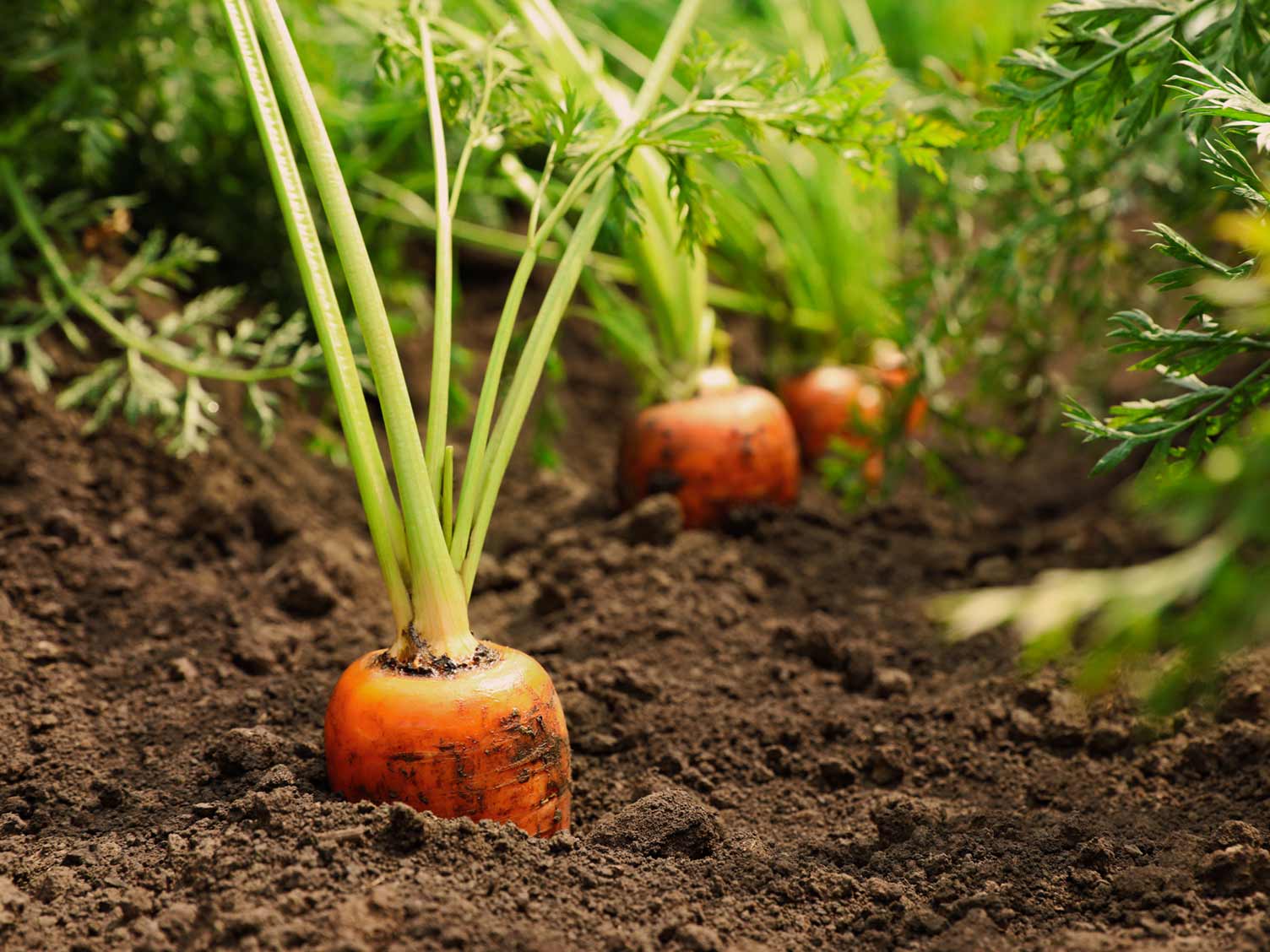Understanding the Importance of Carrot Spacing
Proper spacing is crucial when planting carrots, as it significantly impacts growth, yield, and pest management. Carrots are a cool-season crop that requires adequate space to grow and develop properly. Overcrowding can lead to reduced carrot size, increased disease susceptibility, and decreased overall quality. When carrots are planted too close together, they compete for water, nutrients, and light, resulting in weaker and more vulnerable plants.
Carrot spacing also affects the root system’s ability to absorb nutrients and water. When carrots are spaced too closely, their root systems can become entangled, leading to reduced nutrient uptake and increased susceptibility to disease. On the other hand, proper spacing allows for healthy root development, enabling carrots to absorb the necessary nutrients and water for optimal growth.
In addition to its impact on growth and yield, proper carrot spacing also plays a critical role in pest management. When carrots are planted too close together, it creates an environment conducive to pest infestations. Pests such as the carrot rust fly and the carrot weevil can easily spread from plant to plant, causing significant damage to the crop. By providing adequate space between carrot plants, growers can reduce the risk of pest infestations and promote a healthier crop.
So, how far apart do you plant carrots? The ideal spacing for carrots depends on the variety, soil type, and climate. Generally, carrots should be planted ¼ to ½ inch deep and ¼ to 1 inch apart, depending on the variety. For example, ‘Little Finger’ and ‘Danver’s Half-Long’ varieties can be planted ¼ inch apart, while ‘Imperator’ and ‘Nelson’ varieties require 1 inch of spacing.
By understanding the importance of carrot spacing and providing adequate space for growth and development, growers can optimize their crop’s potential and enjoy a bountiful harvest.
Factors Affecting Carrot Spacing: Soil, Climate, and Variety
When it comes to determining the optimal spacing for carrot plants, several factors come into play. Soil type, climate, and carrot variety are three key factors that can significantly impact the ideal spacing for carrots. Understanding how these factors interact with each other and with the carrot plants themselves is crucial for achieving optimal growth and yield.
Soil type is a critical factor in determining carrot spacing. Carrots prefer well-draining, loose soil with a pH between 6.0 and 6.8. In heavy clay soils, carrots may require more space to accommodate their taproot, while in sandy soils, they may be able to be planted closer together. For example, in a clay soil, carrots may be planted 1-2 inches apart, while in a sandy soil, they may be planted ¼-½ inch apart.
Climate is another important factor to consider when determining carrot spacing. In cooler climates, carrots may be planted closer together to promote warmth and reduce soil temperature fluctuations. In warmer climates, carrots may require more space to accommodate their larger size and to reduce competition for water and nutrients. For example, in a cool climate, carrots may be planted ¼ inch apart, while in a warm climate, they may be planted 1-2 inches apart.
Carrot variety is also a significant factor in determining optimal spacing. Different varieties of carrots have varying growth habits and space requirements. For example, ‘Little Finger’ and ‘Danver’s Half-Long’ varieties are compact and can be planted closer together, while ‘Imperator’ and ‘Nelson’ varieties are larger and require more space. By understanding the specific growth habits and space requirements of the carrot variety being planted, growers can optimize their spacing for maximum yield and quality.
When considering how far apart to plant carrots, it’s essential to take into account the specific growing conditions and variety. By understanding the interactions between soil type, climate, and carrot variety, growers can determine the optimal spacing for their carrots and achieve the best possible results.
How to Determine the Ideal Spacing for Your Carrots
Determining the ideal spacing for carrots requires careful consideration of several factors, including soil type, climate, and carrot variety. To ensure optimal growth and yield, follow these steps to determine the ideal spacing for your carrots:
Step 1: Measure the width of the carrot seed or seedling. This will give you an idea of how much space the carrot will require as it grows.
Step 2: Consider the soil type and climate. As mentioned earlier, different soil types and climates require different spacing. For example, in heavy clay soils, carrots may require more space to accommodate their taproot, while in sandy soils, they may be able to be planted closer together.
Step 3: Check the seed package or consult with a gardening expert to determine the recommended spacing for the specific carrot variety you are planting.
Step 4: Measure and mark out the spacing using a garden measuring tape or a string. Make sure to leave enough space between each carrot plant to accommodate their growth.
Step 5: Adjust the spacing as needed based on the specific growing conditions. For example, if you are planting carrots in a container, you may need to adjust the spacing to accommodate the limited space.
By following these steps, you can determine the ideal spacing for your carrots and ensure optimal growth and yield. Remember to also consider the spacing requirements for companion plants, if you are planting carrots in combination with other vegetables.
When deciding how far apart to plant carrots, it’s essential to consider the specific growing conditions and variety. By taking the time to determine the ideal spacing, you can optimize your carrot crop for maximum yield and quality.
The Benefits of Proper Carrot Spacing: Increased Yield and Reduced Pests
Proper carrot spacing is essential for achieving optimal growth, yield, and pest management. When carrots are planted at the correct distance, they are able to grow and develop without competition for resources, leading to increased yield and improved overall quality.
One of the primary benefits of proper carrot spacing is increased yield. When carrots are planted too close together, they compete for water, nutrients, and light, resulting in reduced growth and yield. By providing adequate space between carrot plants, growers can optimize their yield and achieve the best possible results.
Proper carrot spacing also reduces pest and disease pressure. When carrots are planted too close together, they create an environment conducive to pest infestations and disease outbreaks. By providing adequate space between carrot plants, growers can reduce the risk of pest and disease pressure, leading to healthier and more resilient plants.
In addition to increased yield and reduced pest and disease pressure, proper carrot spacing also leads to more efficient water and nutrient uptake. When carrots are planted at the correct distance, they are able to absorb water and nutrients more efficiently, leading to improved overall plant health.
Furthermore, proper carrot spacing reduces competition for resources. When carrots are planted too close together, they compete for water, nutrients, and light, resulting in reduced growth and yield. By providing adequate space between carrot plants, growers can reduce competition for resources, leading to improved overall plant health and increased yield.
By understanding the benefits of proper carrot spacing, growers can optimize their carrot crop for maximum yield and quality. Whether you’re a seasoned gardener or just starting out, proper carrot spacing is essential for achieving the best possible results.
Common Mistakes to Avoid When Planting Carrots
When planting carrots, it’s essential to avoid common mistakes that can impact growth, yield, and overall quality. One of the most common mistakes is overcrowding, which can lead to reduced carrot size, increased disease susceptibility, and decreased overall quality.
Another mistake to avoid is inadequate soil preparation. Carrots require well-draining, loose soil with a pH between 6.0 and 6.8. If the soil is too dense or compacted, carrots may not be able to grow properly, leading to reduced yield and quality.
Poor spacing is also a common mistake to avoid. Carrots should be planted at the correct distance to allow for proper growth and development. If carrots are planted too close together, they may compete for resources, leading to reduced growth and yield.
Additionally, failing to consider the specific growing conditions and variety of carrot can also lead to mistakes. Different varieties of carrots have different spacing requirements, and failing to take this into account can lead to reduced growth and yield.
To avoid these mistakes, it’s essential to carefully plan and prepare the soil before planting carrots. This includes measuring and marking out the spacing, preparing the soil to the correct depth and pH, and choosing the correct variety of carrot for the specific growing conditions.
By avoiding these common mistakes, growers can optimize their carrot crop for maximum yield and quality. Whether you’re a seasoned gardener or just starting out, taking the time to properly plan and prepare the soil can make all the difference in achieving the best possible results.
Carrot Spacing for Different Growing Methods: Containers, Raised Beds, and Rows
When it comes to growing carrots, the spacing between plants can vary depending on the growing method used. Whether you’re growing carrots in containers, raised beds, or rows, it’s essential to understand the optimal spacing for each method to achieve the best possible results.
Container Growing: When growing carrots in containers, the spacing between plants will depend on the size of the container and the variety of carrot being grown. Generally, carrots should be planted 1-2 inches apart in containers, depending on the size of the container and the variety of carrot.
Raised Beds: Raised beds are a popular growing method for carrots, as they provide good drainage and soil aeration. When growing carrots in raised beds, the spacing between plants should be 2-3 inches apart, depending on the variety of carrot and the size of the bed.
Row Growing: Row growing is a traditional method of growing carrots, where the carrots are planted in rows that are typically 12-18 inches apart. The spacing between plants in each row will depend on the variety of carrot and the desired level of competition for resources.
Regardless of the growing method used, it’s essential to consider the specific growing conditions and variety of carrot when determining the optimal spacing. By understanding the optimal spacing for each growing method, growers can optimize their carrot crop for maximum yield and quality.
When deciding how far apart to plant carrots, it’s also important to consider the specific growing conditions and variety of carrot. By taking the time to properly plan and prepare the soil, and by using the optimal spacing for the growing method being used, growers can achieve the best possible results and enjoy a bountiful harvest of delicious and healthy carrots.
Tips for Planting Carrots in Companion with Other Vegetables
Planting carrots in companion with other vegetables can be a great way to improve growth, reduce pests, and increase overall yield. When choosing companion plants for carrots, it’s essential to select varieties that are compatible and will not compete for resources.
Some popular companion plants for carrots include onions, garlic, and radishes. These plants can help to repel pests that target carrots, such as the carrot rust fly and the carrot weevil. They can also help to improve soil health and fertility, which can benefit the carrots.
When planting carrots in companion with other vegetables, it’s essential to optimize the spacing for maximum benefit. The spacing between carrot plants will depend on the specific growing conditions and variety of carrot being grown. However, as a general rule, carrots should be planted 1-2 inches apart when grown in companion with other vegetables.
Another tip for planting carrots in companion with other vegetables is to choose varieties that have different growth habits. For example, planting carrots with a sprawling variety of squash can help to shade the soil and prevent weeds from growing. This can help to reduce competition for resources and improve overall yield.
Finally, when planting carrots in companion with other vegetables, it’s essential to monitor the results and adjust the spacing as needed. By paying attention to the growth and development of the carrots and companion plants, growers can optimize the spacing for maximum benefit and achieve the best possible results.
By following these tips and optimizing the spacing for carrots when grown in companion with other vegetables, growers can improve growth, reduce pests, and increase overall yield. Whether you’re a seasoned gardener or just starting out, planting carrots in companion with other vegetables can be a great way to achieve the best possible results.
Conclusion: Optimizing Carrot Growth with Proper Spacing
Proper carrot spacing is crucial for optimal growth, yield, and pest management. By understanding the factors that affect carrot spacing, such as soil type, climate, and variety, growers can determine the ideal spacing for their carrots. Proper spacing can lead to increased yield, reduced pest and disease pressure, and improved overall plant health.
When deciding how far apart to plant carrots, it’s essential to consider the specific growing conditions and variety of carrot. By taking the time to properly plan and prepare the soil, and by using the optimal spacing for the growing method being used, growers can achieve the best possible results and enjoy a bountiful harvest of delicious and healthy carrots.
Experimenting with different spacing techniques and monitoring the results can help growers find the best approach for their specific growing conditions. By optimizing carrot spacing, growers can improve growth, reduce pests, and increase overall yield.
In conclusion, proper carrot spacing is a critical factor in achieving optimal growth, yield, and pest management. By understanding the factors that affect carrot spacing and by using the optimal spacing for the growing method being used, growers can enjoy a successful and productive carrot crop.








